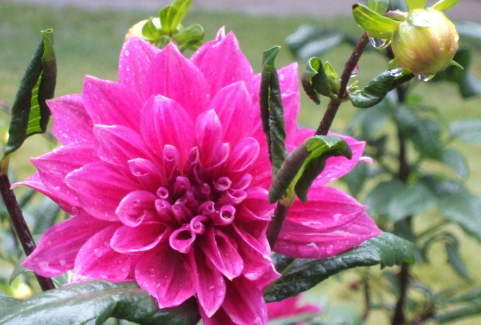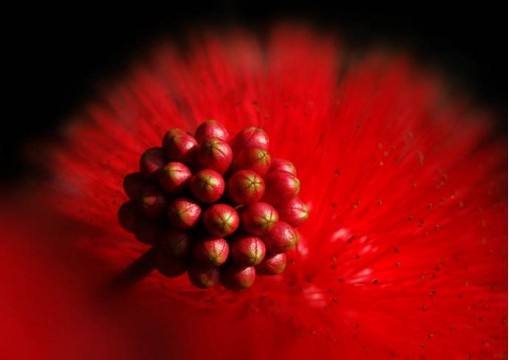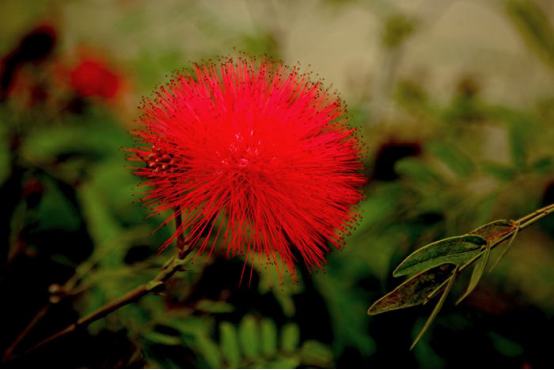Matters needing attention in the Culture of Dahlia
1. Watering
Dahlias are fleshy roots, so the cultivated soil must be loose and breathable, otherwise it is easy to lose oxygen and cause rotten roots. Dahlia flowers are luxuriant and need a lot of water at high temperature, otherwise the leaves will wilt and should be watered thoroughly at one time.

two。 Sunshine
Dahlia likes sunlight and is not resistant to shade. If there is not enough light, its root system will be weak, which will affect plant growth, poor flower bud development, and even difficult to bloom.
3. Fertilizer application
Dahlia has a strong root system and needs a lot of fertilizer. Before cultivation, it is necessary to apply a sufficient amount of base fertilizer and light fertilizer to topdressing. The concentration of fertilizer will lead to dead branches and dead seedlings.
4. Pruning
Dahlias grow vigorously and have luxuriant leaves, so in order to properly control the flowers, it is necessary to pick the heart, promote the branches, and retain the terminal buds. After showing the buds, you only need to keep the strong one and cut off more than the buds, which will make the flowers bigger and more beautiful.
Above is the breeding method of dahlias. I hope these can help you to grow more healthy and beautiful dahlias.
Is Dahlia poisonous? culture methods and matters needing attention of Dahlia
Dahlia, also known as Dahlia, Tianzhu Dan, is a world-famous flower plant, so Dahlia is poisonous? Next, let's talk about the breeding methods and matters needing attention of Dahlia.
Are dahlias poisonous?
The editor can definitely tell you that dahlias are not poisonous and dahlias are famous for their anti-pollution plants. The root tuber contains inulin, which is similar to glucose in medicine. The whole plant can be used as medicine and has the effect of clearing away heat and detoxification.
Dahlia like sunny enough is a positive flower, every day to see at least 4 or 5 hours of direct light to leaf luxuriant flowers, indoor south, west balcony is better, put on the balcony for about 10 days to rotate 180 °, anti-skew crown. Avoid indoor and shady places where the sun is not exposed.
Dahlia is a kind of flower that is easy to grow, so there is no need to keep it at home. Almost all flowers have some disturbing factors. For example, the fragrance of flowers is generally aromatic and poisonous, but on the other hand, it can also purify the air. So the editor thinks that it is best not to keep flowers in the bedroom, but on the balcony of the living room!
Culture methods of dahlias:
1. Soil: Dahlia is suitable for growing in loose, humus-rich and well-drained sandy loam. Generally speaking, 5 parts of garden soil, 2 parts of rotten leaf soil, 2 parts of sandy soil and 1 part of dried dung are suitable for culture soil, which is easy to cause waterlogging and rot roots and can not be used.
2. Fertilization: rarefied liquid fertilizer is generally applied every 10-15 days from the seedlings. Apply once every 7-10 days after budding, and fertilizer should be stopped when the bud is transparent. It is not suitable to apply fertilizer when the temperature is high.
3. Watering: watering dahlias like water but avoid stagnant water, too much watering is easy to rot. In general, the seedling stage in the early stage of growth can be watered once a day on a sunny day to keep the mound slightly moist. In the later stage of growth, more water is consumed, so it is easy to lack water at noon or in the evening, and the amount of water should be increased appropriately.
4. Temperature: Dahlia likes cool climate, and 10: 25 ℃ is the most suitable. Cooling measures should be taken in the high temperature season. The daytime temperature is maintained at about 25 ℃, and when it exceeds 25 ℃, it must be ventilated and cooled down. When the night is below 10 ℃, the indoor temperature should be increased.
5. Lighting: dahlias like light and are not tolerant to shade. If placed in a shaded place for a long time, they will grow poorly, have weak roots, thin leaves and thin stems, small flowers and light colors, and even cannot blossom. The leaves need sufficient light during the growing period, and the daily light is required to be more than 6 hours, so that the plants are strong and the flowers are large and plump.
Points for attention in the culture of dahlias:
It likes the humid environment, the leaves are easy to shrink and turn yellow when drought, watering should be moderate, the soil is slightly moist, too wet is easy to grow, and waterlogging is easy to rot roots, so it is appropriate to put broken hard plastic foam blocks at the bottom of the basin when planting to enhance air permeability and drainage to prevent rotting roots.
Dahlia is a positive flower, it takes at least 4 or 5 hours of direct light every day to grow leaves and flowers, which should be placed in the roof garden, south and west balcony, and the balcony should be rotated 180 °for about 10 days to prevent the crown from deviation.
Dahlia can adapt from 10 ℃ to 32 ℃, and 15 ℃ to 25 ℃ is the most suitable. The growth of dahlia is stagnant above 32 ℃, and it can be placed on the cool east and north balcony.
In the hot and rainy summer, dahlias placed in the roof garden should be shaded and protected from rain and rotting roots. Dahlias are not resistant to cold and wither when frost hits the underground stem.
How to raise dahlias, how to cultivate dahlias and points for attention
Dahlia is also a common flower plant, the shape of the flower is unique, and the flower is very large, loved by flower friends, so how to raise Dahlia better, I believe it is a problem concerned by many novices, the following collates the daily cultivation methods of Dahlia.
Dahlia culture method 1. Loose sandy soil
Dahlia is suitable for growing in loose, humus-rich and well-drained sandy loam. Generally speaking, 5 parts of garden soil, 2 parts of rotten leaf soil, 2 parts of sandy soil and 1 part of dried dung are suitable for culture soil, which is easy to cause waterlogging and rot roots and can not be used.
2. Light exposure
Dahlia likes light and is not tolerant to shade. If it is placed in a shaded place for a long time, it will have poor growth, weak roots, thin leaves and thin stems, light flowers, and even can not blossom. The leaves need sufficient light during the growing period, and the daily light is required to be more than 6 hours, so that the plants are strong and the flowers are large and plump.
3. Watering to avoid stagnant water
Watering dahlias like water but avoid stagnant water, too much watering is easy to rot the roots. In general, the seedling stage in the early stage of growth can be watered once a day on a sunny day to keep the mound slightly moist. In the later stage of growth, more water is consumed, so it is easy to lack water at noon or in the evening, and the amount of water should be increased appropriately.
4. Fertilizing and replenishing nutrition
Rarefied liquid fertilizer is generally applied every 10-15 days from the seedlings. Apply once every 7-10 days after budding, and fertilizer should be stopped when the bud is transparent. It is not suitable to apply fertilizer when the temperature is high.
5. Temperature control
Dahlia likes cool climate, and 10-25 ℃ is the most suitable. Cooling measures should be taken in the high temperature season. The daytime temperature is maintained at about 25 ℃, and when it exceeds 25 ℃, it must be ventilated and cooled down. When the night is below 10 ℃, the indoor temperature should be increased.
Matters needing attention in dahlia culture 1. Jasper shade in summer
In the hot and rainy summer, dahlias placed in the roof garden should be shaded and protected from rain and rotting roots. Dahlias are not resistant to cold and wither when frost hits the underground stem.
2. Create an adaptive environment
Dahlias like the humid environment, the leaves are easy to shrink and turn yellow during drought, watering should be moderate, the soil is slightly moist, too wet is easy to grow, and waterlogging is easy to rot roots, so it is appropriate to put broken hard plastic foam blocks at the bottom of the basin when planting to enhance air permeability and drainage to prevent rotting roots.
3. Get plenty of sunshine every day
Dahlias need to see at least 4 or 5 hours of direct light every day in order to grow leaves and flowers, which should be placed in the roof garden, south and west balcony, and the balcony should be rotated 180 °for about 10 days to prevent the crown.
- Prev

Matters needing attention in the Culture of Zhu tasseled Flower
The plants that trim the Zhu tasseled flowers grow very tall and begin to be pruned when the young trees are up to 2 meters high. The main branches of Zhu tasseled flowers can be cut off to promote new branches and make the crown fuller. At ordinary times, we should pay attention to pruning the plant type and cut off the extra side branches and unnecessary new buds.
- Next

Matters needing attention in the maintenance of Zhu tasseled flowers
Soil red tasseled flower is an imported variety, which likes warm, moist and sunny environment, is not cold-resistant, and does not have high requirements for soil. As long as the soil layer is deep and well drained, it can grow well. Water and fertilizer Zhu tasseled flower has a great demand for water and fertilizer.
Related
- Fuxing push coffee new agricultural production and marketing class: lack of small-scale processing plants
- Jujube rice field leisure farm deep ploughing Yilan for five years to create a space for organic food and play
- Nongyu Farm-A trial of organic papaya for brave women with advanced technology
- Four points for attention in the prevention and control of diseases and insect pests of edible fungi
- How to add nutrient solution to Edible Fungi
- Is there any good way to control edible fungus mites?
- Open Inoculation Technology of Edible Fungi
- Is there any clever way to use fertilizer for edible fungus in winter?
- What agents are used to kill the pathogens of edible fungi in the mushroom shed?
- Rapid drying of Edible Fungi

